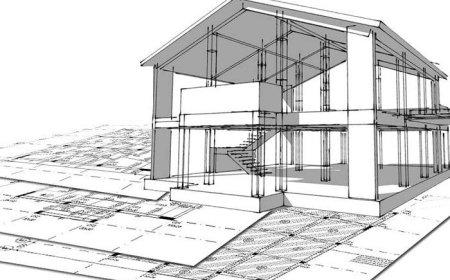How to Choose Best Location for Real Estate Rental Income
Discover how to choose the best location for real estate rental income with practical tips and proven strategies. Learn what truly makes a property location profitable.

When it comes to real estate investing, one of the most important decisions is choosing the right location. A good location can mean steady rental income, rising property values, and long-term financial success. On the other hand, a poor location may lead to vacancies, maintenance issues, and low returns.
In this blog, well explore how to evaluate and choose the best location for maximizing rental income. Whether you're a first-time investor or looking to expand your portfolio, these guidelines can help you make informed choices.
Understand the Purpose of the Investment
Before diving into the location, clarify your investment goals. Ask yourself:
-
Are you looking for high monthly cash flow?
-
Are you planning for long-term appreciation?
-
Do you want short-term tenants or long-term renters?
Different goals will influence which location is ideal. For example, short-term rental success may come from tourist-heavy areas, while long-term rental stability may favor suburban neighborhoods near schools and business hubs.
Evaluate the Local Rental Demand
A great property in a low-demand area wont generate income. Investigate local rental demand by looking at:
-
Occupancy rates in the area
-
Average rental prices
-
Turnover frequency of rental units
-
Waitlists or competition for available rentals
Cities with growing populations and job opportunities often show strong rental demand. University towns, business hubs, and rapidly developing cities are worth exploring.
Check Employment and Economic Growth
Tenants need jobs, and jobs grow where the economy is healthy. Locations with rising employment rates and a diverse job market tend to attract more renters. Look for areas with:
-
Low unemployment rates
-
Expanding industries or corporate offices
-
Infrastructure development and new business investments
Economic growth often leads to population growth, which drives up demand for housing. A stable economy ensures your tenants can pay rent consistently.
Proximity to Amenities and Services
People want convenience. Rental properties close to key amenities are more attractive to potential tenants. Consider properties located near:
-
Schools and universities
-
Public transport stations or bus routes
-
Grocery stores and shopping centers
-
Parks, hospitals, and entertainment options
The more amenities nearby, the higher the rental appeal and potential income. Walkability can also be a major bonus.
Neighborhood Safety and Appeal
Safety is a top priority for renters. Areas with low crime rates are more desirable and can even command higher rent. Before investing, research:
-
Local crime statistics
-
Street lighting and police presence
-
General cleanliness and upkeep of the neighborhood
A well-kept, friendly neighborhood creates long-term tenant satisfaction and reduces turnover. It also protects your propertys value over time.
Know the Local Rental Laws
Each location has its own set of rental regulations. Some cities are landlord-friendly, while others heavily favor tenants. Before purchasing in any area, review:
-
Rent control laws
-
Eviction processes
-
Short-term rental restrictions
-
Property tax rates and landlord obligations
Understanding the local legal environment helps avoid future disputes and protects your investment.
Consider the School District Quality
For family tenants, being in a good school district is often a top requirement. Even if your ideal tenants arent families, properties in such districts usually have higher property values and rental demand. Better schools equal more stable renters and greater appreciation.
Analyze Property Price vs. Rental Income
To generate profit, the rental income must justify the propertys cost. Calculate the rental yield, which is the annual rental income divided by the propertys purchase price.
A good rental yield varies by market, but typically, a gross yield above 6% is considered favorable. Use local averages to benchmark your potential returns before committing to a purchase.
Check for Future Development Plans
Growth in an area often boosts rental income opportunities. Research whether there are:
-
Planned highways or public transit upgrades
-
New commercial centers or industrial parks
-
Government investment in infrastructure
-
Upcoming housing or apartment developments
These developments can increase property demand, but be cautioustoo much new supply might saturate the market and reduce rental rates.
Talk to Local Property Managers or Agents
Getting insight from professionals on the ground can provide clarity about what tenants want in the area. They can share details on tenant preferences, pricing trends, and vacancy risks that online research might miss.
Even if you plan to manage the property yourself, having a network of local experts adds tremendous value in the long run.
Choose a Location That Aligns With Your Strategy
Some investors chase high-yield properties in up-and-coming neighborhoods, while others prefer stability in well-established zones. Neither approach is wrong, but each requires a different level of risk tolerance and management involvement.
Ask yourself:
-
Are you comfortable with fixer-uppers in developing neighborhoods?
-
Would you rather invest in a turn-key property with steady tenants?
-
Do you have the time to manage tenants from afar, or do you need to be nearby?
Let your strategy guide your location choicenot just the price or hype.
Final Thoughts
Choosing the best location for real estate rental income takes time, research, and a clear understanding of your goals. Its not about finding the cheapest property or following trends blindly. Its about long-term value, tenant demand, and smart financial planning.
By focusing on economic factors, tenant needs, neighborhood quality, and future development, youll be able to pinpoint locations that offer steady income and growth potential. With the right location, your rental investment can become a powerful tool for building wealth and financial freedom.
Important Links
How En Bloc Sales Work in Singapore: A Guide for Condo Owners and Buyers
A Complete Guide to Real Estate in Singapore for Home Buyers and Investors
Understanding the Real Estate Market in Singapore
How to Start a Career in Real Estate with No Experience
Guide to Executive Condominiums (ECs) in Singapore: Are They Worth It in 2025
Thomson View En Bloc Condo Showflat
Tags:
Related Posts
top real estate stocks in india 2025
nickk Jul 15, 2025 5









































